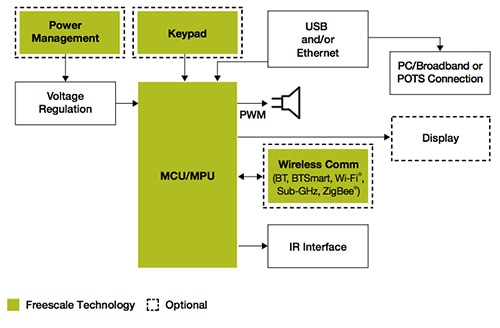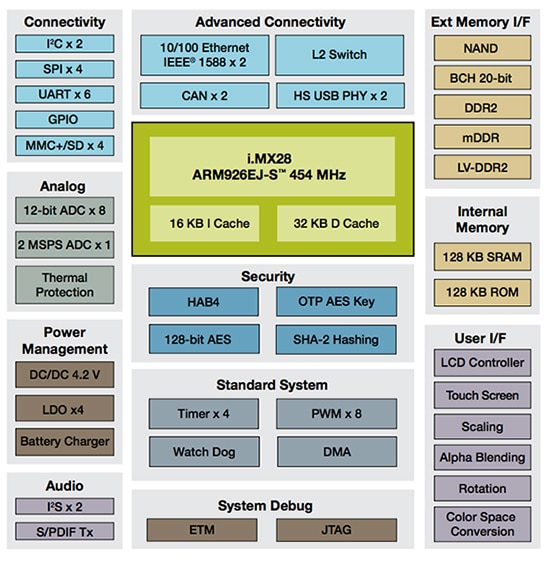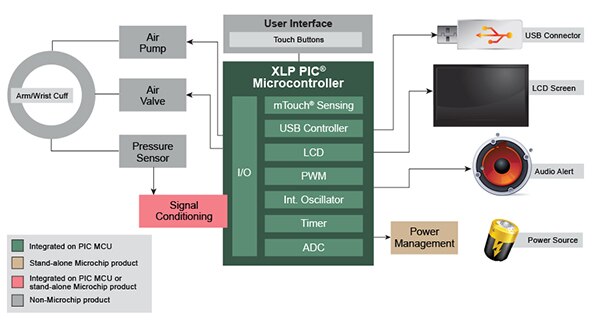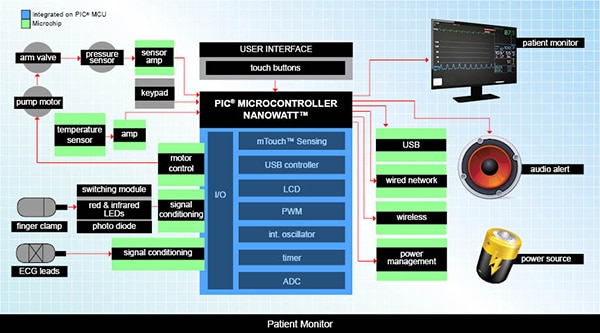Wireless Charging, Connectivity, Small Size and Low Power Key for Personal Health Tech
投稿人:DigiKey 欧洲编辑
2015-07-29
The number of personal health monitoring devices deployed has been predicted by industry analysts to double by 2016 from around 5 million today to around 10 million by next year. These devices will, by necessity, be small, unobtrusive and easy to maintain — typically by the patient themselves. Because of the nature of health monitoring, it is likely that the devices will also need to be hermetically sealed or, at the very least, easily cleaned using medical-grade detergents. This points to a need for wireless connectivity and wireless charging. As they’re likely to be required to remain operational for extensive periods without interruption, the need for low power solutions is also becoming apparent.
Another necessary feature will be the need for security; the Health Insurance Portability and Accountability Act (HIPAA) enacted in the USA in 1996 is just one example of how legislation will be imposed to ensure data security. It will fall upon the OEMs to implement the necessary level of security to maintain compliance with such legislation. Many MCUs today feature embedded security features, while all the communication protocols currently deployed in large volume have security elements built-in at their core. The key to meeting the expected demand for Home Health devices will be in matching the market requirements with the available technical capabilities and, where necessary, develop new solutions.
Ad-hoc Infrastructure
Currently, the infrastructure for home medical devices is rudimentary, involving standalone devices (such as blood glucose testers), devices that can gather data for access via USB/PC, or simple monitors that can connect via Bluetooth to a Smart Phone. While all of these devices have established a place in the market, the real benefits of ‘telehealth’ will come from connected devices seamlessly monitoring more complex parameters (such as blood pressure, respiratory rate or movement) and securely transferring that information to healthcare professionals, for patients with long- or short-term health conditions that require constant monitoring.
In this scenario, the need for a more sophisticated infrastructure is clear: one that will be secure enough to protect confidential data but flexible enough to allow devices to join/leave the network easily. At the heart of a home health infrastructure would be a ‘hub’ or Gateway. Typically this would be based on a highly integrated solution designed for the purpose, such as the i.MX28 family from Freescale. It forms the basis of a Home Health Hub reference design (Figure 1), which Freescale has bundled with the iDigi Telehealth Application Kit.

Figure 1: Freescale’s Home Health Hub Reference Design features all of the basic functions required.
The i.MX28 is a family of application processors based on the ARM9 core (Figure 2), which integrates display, power management and connectivity features. The LCD controller supports touch-sensitive input, supported by Freescale’s Touch-Sensing Software Suite (TSS), which includes the algorithms needed to support a wide variety of different materials and inputs (such as rotary, slider or keypads). The Suite can be deployed on a wide range of MCUs including the 32-bit ARM Cortex-M based Kinetis families and the 8-bit S08 families, as well as MPUs, either on the host or offloaded onto a smaller, lower cost MCU. Such HMIs will be the norm in devices that must be easily cleaned or able to function in a variety of medical environments.

Figure 2: Freescale’s ARM9-based i.MX28 Family integrates the key functions necessary to develop a Home Health Hub Gateway.
Connectivity
The development and deployment of connected medical monitoring devices will rely heavily on standards for communications; the market has already made it clear that it will not support a closed ecosystem, and so to encourage the necessary investment in developing home health devices the industry has supported the development of wired and wireless profiles that address the specific demands of medical devices.
Most notably, for wireless, the Bluetooth SIG’s Medical Device Working Group has developed the Health Device Profile (HDP), while the USB organization has defined the Personal Healthcare Device class (PHDC). Both have been adopted by the Continua Health Alliance.
One of the benefits of Bluetooth Low Energy in a medical device use-case running the HDP is that it supports communications to a web-based application without the need to go via a smartphone or PC; instead the device can communicate directly with a Gateway (as described earlier), thereby further increasing the security credentials of the Home Health network.
Employing either or both of these protocols for the transmission of sensitive medical data requires an MCU not only capable of implementing the software but providing the extra level of security that legislation now requires. As the Bluetooth stack uses the Advanced Encryption Standard (AES), the MCU chosen needs to be able to support this; one example is the MSP430FR59xx family from Texas Instruments. TI is positioning this particular version of the MSP430 portfolio as being suitable for portable medical devices for a number of reasons. Firstly, it is built on TI’s latest ultra-low-power ‘Wolverine’ technology platform, making it immediately advantageous for battery-powered devices. Secondly, it integrates FRAM memory which, as well as being a low-power technology with near infinite read/write cycles, is inherently tamper-resistant. The device also supports secure applications through its 256-bit AES hardware, and allows memory segments to be locked down to protect IP and provide for secure data logging.
Applications
As patients become more familiar and comfortable with portable medical devices, the range of devices will further increase. Today, the range of devices available spans patient monitoring devices for blood pressure or blood glucose (Figure 3), a single device to provide a range of patient monitoring features (Figure 4), to environment conditioning such as an oxygen concentrator (used to increase the amount of oxygen in a small area such as a mask).

Figure 3: Microchip’s design for blood pressure monitor.

Figure 4: Microchip’s design for a multi-function patient monitor.
However, one of the more challenging applications is Iontophoresis; the process of delivering medication through the skin (transdermal). This involves a charge compound driven through the skin using an electrical current. This puts this class of device firmly in the ‘wearable’ class, as the medication is typically deployed using disposable patches, and one of the biggest challenges in this type of device is size, as the patch must incorporate all of the electronics and the battery. Microchip believes it has a solution to this application, in the form of the PIC10F322; an 8-bit MCU that comes in a 6-pin package. Despite its size — and having just 35 instructions — it integrates: the core, Flash memory, and ADC; a configurable logic cell; a complimentary waveform generator; a fixed voltage reference; a numerically controlled oscillator; a temperature indicator, and PWM modules, as well as several timers.
At the other end of the scale, the PIC32MX5xx/6xx/7xx range of devices, suggested for the patient monitoring solution, feature a 32-bit MIPS M4K core coupled to up to 512-kbyte of Flash and up to 128-kbyte of SRAM. These credentials make the family more applicable to applications that employ high-end graphics interfaces, as well as being more than capable of handling multitasking application software.
Conclusion
The potential for portable medical device applications is almost limitless; not only is the general population living longer but the advancement in sensor technology will continue to enable a wider range of conditions to be monitored in smaller devices, while the miniaturization of traditional diagnostic equipment such as ultrasound is putting more advanced equipment in the hands of the patients. Providing connectivity to these devices will enable medical professionals to administer to the needs of more patients across greater distances. There’s wide agreement that the burden of health care is rising at an alarming rate, but through harnessing advancements in technology and the development of more secure solutions, we have the ability to ease that burden, improve the quality of life and even detect potentially serious conditions much sooner for a growing population.

免责声明:各个作者和/或论坛参与者在本网站发表的观点、看法和意见不代表 DigiKey 的观点、看法和意见,也不代表 DigiKey 官方政策。








